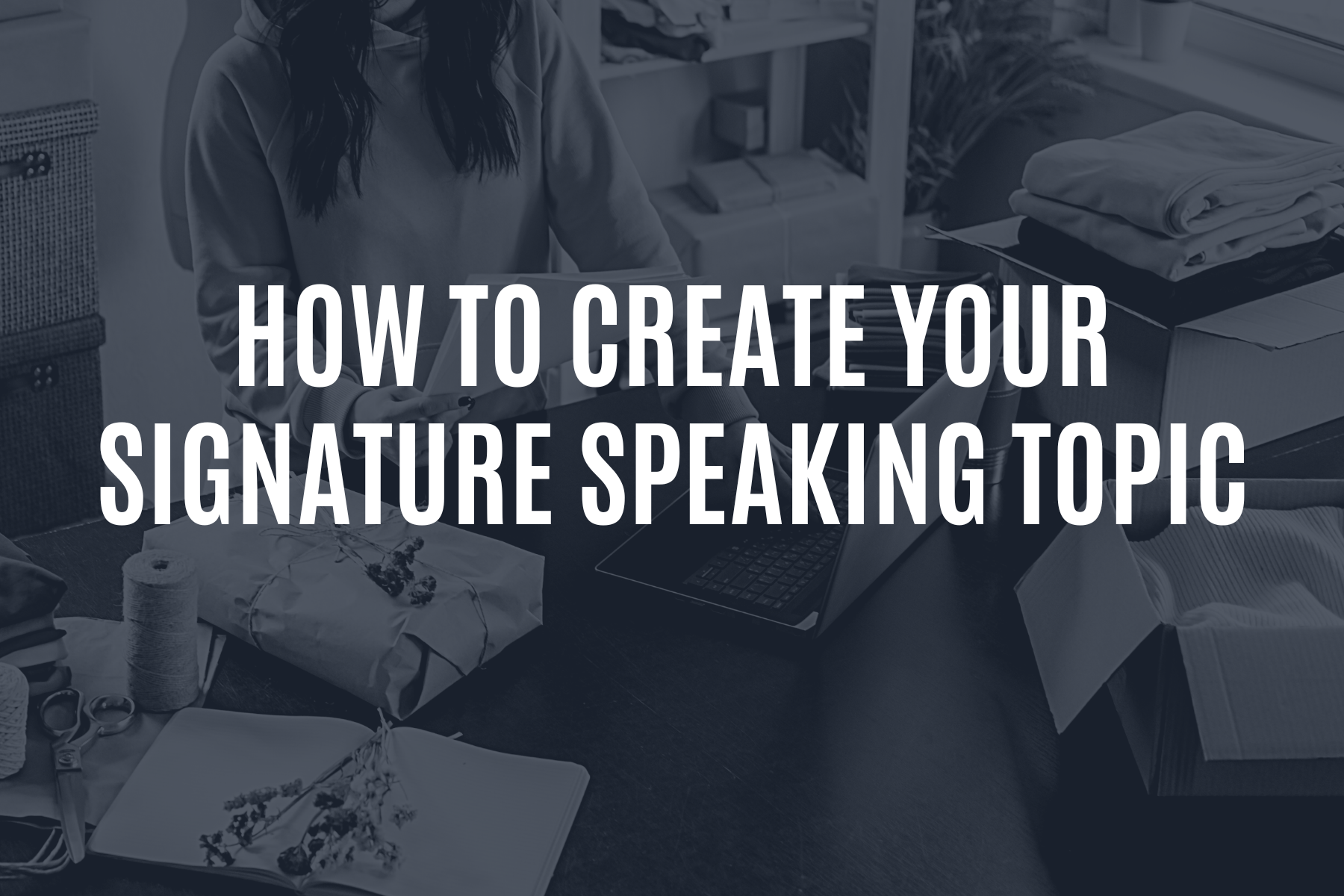Want to receive The Solopreneur’s Shortcut every week? Subscribe here. We’ll send one thought, one tactic, and one time saver straight to your inbox. No fluff, just proven techniques for growing your business.

I once made $8k from a speaking engagement, even though I didn’t get paid to speak.
So, how did I make $8k? A few of the attendees liked me and my message enough to hire me for 1:1 coaching after the event.
This is important, because I know a lot of people want to become paid speakers. However, there’s more than one way to make money as a speaker.
You don’t have to just make money from a speaking engagement, you can also make money through a speaking engagement.
All you have to do is:
- Provide value to your audience
- Let them know how they can work with you
From there you’ll generate leads who convert much faster since due to the authority you’ve demonstrated from being on stage and the actionable advice you’ve delivered in the process.
So, how do you do that?
I’ll explain in this email and get even more granular during my upcoming workshop.
Estimated reading time: 5 minutes
Start from the end
What specific action do you want people to take after they hear you speak?
Sure, the obvious answer might be “hire me” but you’ll need to get even more focused.
What do you want them to hire you for?
On my end, I have multiple offers.
- Group workshops
- Online courses
- 1:1 Coaching
So, when speaking, I need to determine exactly which offer I’d like them to consider after the event.
I recently spoke at a conference for creative entrepreneurs and my goal – beyond providing value from the stage – was to book 1:1 coaching sessions.
I decided to go with my keynote Money Mindset: Think Bigger and Unlock Your Wealth Potential.
At the end of my talk, I asked attendees to contact me if they needed help with unlocking revenue in their business.
Your turn.
Determine the specific action you want your audience to take after they hear you speak. This could be one of your offers, an invite to join your newsletter or something else depending on your brand and business.
Determine your key takeaways
What do you want people to learn from you?
I know there’s a LOT you can teach your audience, but you need to be strategic here.
What are three lessons you can share that highlight your talent AND encourage attendees to learn more about the specific offer you’re promoting?
This alignment is important because at the end of your talk you want to be able to say, “If you need more help with this stuff, hire me.”
Of course, say it in a more savvy way than that, but you get the point.
These are the key takeaways associated with my Money Mindset keynote:
- Identify and avoid the most common financial pitfalls faced by entrepreneurs
- Increase your rates and revenue without working around the clock
- Create a profit multiplier for your business without reinventing the wheel
Your turn.
Determine the three takeaways you’ll share with your audience. Remember, these must be aligned with the offer you’re going to promote.
Share stories that align with your key takeaways
Want to avoid boring your audience or forgetting what to say on stage?
Tell stories!
This is the easiest way to provide engaging context around the key takeaways you’re sharing.
Plus, since you’re telling stories, you don’t have to worry about remembering them word for word, just share the general theme.
So, what stories should you tell?
They can be your personal stories, a story about someone you know, a client you helped, a recognizable public figure or a company that resonates with your audience.
Your best bet is to choose one of the options above and stick with it for all of your stories. This will help your audience follow along better and build anticipation throughout your talk.
In my keynote, I tell three stories about my entrepreneurial journey and how my money mindset evolved.
Again, these stories must align with your key takeaways, so I’ll list those takeaways and a snippet of the associated stories below.
- Identify and avoid the most common financial pitfalls faced by entrepreneurs
- I told a story about how I drastically undercharged a client out of desperation
- Increase your rates and revenue without working around the clock
- This was the perfect opportunity to share how I announced a price increase to my prospects and how that got many of them to sign up before the fee went up
- Create a profit multiplier for your business without reinventing the wheel
- I talked about how I started licensing my online courses so I could make more money by selling them to colleges and universities
These stories not only engage the audience, they’re the key to making your audience remember what you’re talking about.
I’ll get nerdy for a moment and explain how:
A research study at Stanford required students to prepare a 1 minute speech on whether or not non-violent crime is a serious problem (half for, half against).
On average, the students used 2.5 statistics in their 1 minute speeches – only 1 in 10 students told a story.
But when it came to remembering the presentations 10 minutes later, only 5% of the audience could recall any individual statistic, but 63% of the audience could remember the stories.
So why does that matter to you? In this case, stories are about 12 times as memorable as statistics.
And as you may have guessed, if you want to land clients from the stage, they have to remember what you said.
Here’s a quick example of someone who remembered my story five years after they attended one of my presentations:

So if you want to leave the same lasting impact – and make money from the stage – keep this in mind; facts tell, stories sell.
Your turn.
Develop meaningful stories that are aligned with each of your key takeaways. This may be the most challenging part, but it’s also the most important.
What’s next?
Now that you have your signature speaking topic assembled, it’s time to find places where you can deliver it. This will be specific to you and your business, but aim for outlets that already have access to your audience.
I started out speaking at libraries and coworking spaces in Brooklyn since I knew they had access to local entrepreneurs. A year later, I was speaking on stages around the country.
It worked for me and I know it will work for you too.
And if you need help packaging, pitching or even pricing your speaking topics, check out my upcoming workshop.
You’ll learn how to create the one speech that will boost your revenue and attract clients who don’t question your expertise or haggle about your prices.
It takes place Wednesday, October 4th from 2:00-4:00 PM EDT.
Can’t make it live? You can still access the recording and resources at a discounted rate.
That’s it for now, have a great weekend!

